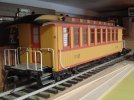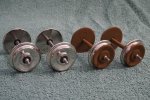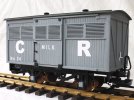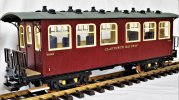Greg Elmassian
Guest
There were some wheels made by Accucraft for their AMS line with hugely conical profiles, whether it was to enhance the differential action of a larger diameter contact on curves, or to enhance the self centering ability on track, they were a phenomenal failure. They were removed from further production cars, but still sold to the market as replacement parts...
As everyone above has pointed out, there is a fine line between too much taper and not enough, and it can indeed be speed dependent.
Most people have come back to 2-3% taper, and a "reasonable" fillet between flange and tread, but with our unprototypically tight curves, there is no great solution other than having one or more wheels turn independently of the other.
Greg
As everyone above has pointed out, there is a fine line between too much taper and not enough, and it can indeed be speed dependent.
Most people have come back to 2-3% taper, and a "reasonable" fillet between flange and tread, but with our unprototypically tight curves, there is no great solution other than having one or more wheels turn independently of the other.
Greg




